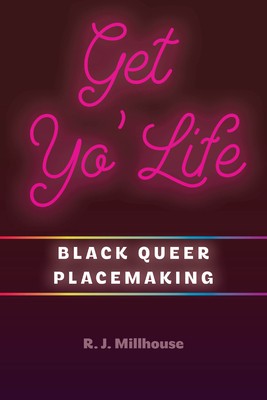
- We will send in 10–14 business days.
- Author: R J Millhouse
- Publisher: Ohio State University Press
- ISBN-10: 081421584X
- ISBN-13: 9780814215845
- Format: 15.2 x 22.9 x 1.3 cm, kieti viršeliai
- Language: English
- SAVE -10% with code: EXTRA
Reviews
Description
In Get Yo' Life, R. J. Millhouse incorporates gender and sexuality studies, archival work, performance studies, and urban studies to craft a historical geography of Black queer public life and culture from the 1960s onward. He does so via case studies of two Brooklyn nightclubs, Langston's Brooklyn and Happiness Lounge, as patrons fought to preserve their spaces and community in the face of gentrification. Introducing Black queer spatiality as an analytic method and a type of intersectionality-driven memory work, Millhouse teases out the nuanced functions of care work, performance, and kinship labor, along with attendant sensational, atmospheric, and nostalgic factors, as they inform Black queer placemaking practices. These practices--such as resource fairs, vogue competitions, and the appropriation of public parks as communal places--often face opposition from the police or well-to-do, mostly white, neighbors. Yet, they remain vital sites of Black queer agency. By focusing on the structural powers that condition the lives and placemaking and placekeeping strategies of Black queer people in Brooklyn, Millhouse reveals the ways in which people make and preserve place amid state-sanctioned displacement.
EXTRA 10 % discount with code: EXTRA
The promotion ends in 22d.16:47:35
The discount code is valid when purchasing from 10 €. Discounts do not stack.
- Author: R J Millhouse
- Publisher: Ohio State University Press
- ISBN-10: 081421584X
- ISBN-13: 9780814215845
- Format: 15.2 x 22.9 x 1.3 cm, kieti viršeliai
- Language: English English
In Get Yo' Life, R. J. Millhouse incorporates gender and sexuality studies, archival work, performance studies, and urban studies to craft a historical geography of Black queer public life and culture from the 1960s onward. He does so via case studies of two Brooklyn nightclubs, Langston's Brooklyn and Happiness Lounge, as patrons fought to preserve their spaces and community in the face of gentrification. Introducing Black queer spatiality as an analytic method and a type of intersectionality-driven memory work, Millhouse teases out the nuanced functions of care work, performance, and kinship labor, along with attendant sensational, atmospheric, and nostalgic factors, as they inform Black queer placemaking practices. These practices--such as resource fairs, vogue competitions, and the appropriation of public parks as communal places--often face opposition from the police or well-to-do, mostly white, neighbors. Yet, they remain vital sites of Black queer agency. By focusing on the structural powers that condition the lives and placemaking and placekeeping strategies of Black queer people in Brooklyn, Millhouse reveals the ways in which people make and preserve place amid state-sanctioned displacement.


Reviews